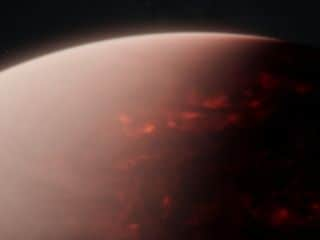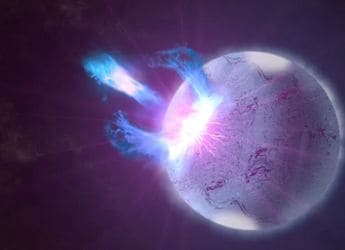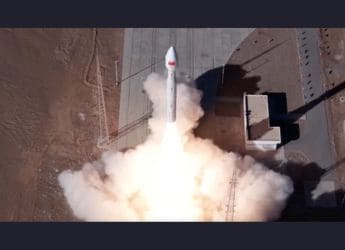- Home
- Science
- Science News
- Nasa Tests 3D Printed Rocket Engine for Mars, Deep Space Missions
Nasa Tests 3D-Printed Rocket Engine for Mars, Deep Space Missions

A turbo pump is complex because it has turbines that spin fast to drive the pump which supplies fuel to the engine.
"This is one of the most complex rocket parts Nasa has ever tested with liquid methane - a propellant that would work well for fueling Mars landers and other spacecraft," said Mary Beth Koelbl, manager of the propulsions systems department at Nasa.
"Additive manufacturing or 3D printing made it possible to quickly design, build and test two turbo pumps with identical designs that worked well with both liquid methane and liquid hydrogen propellant," he said in a statement.
During the full power test, the turbines generated 600 horsepower and the fuel pump, got its "heartbeat" racing at more than 36,000 revolutions per minute.
This delivered 600 gallons of semi-cryogenic liquid methane per minute - enough to fuel an engine producing over 22,500 pounds of thrust. Three other tests were completed at lower power levels.
"Methane propulsion and additive manufacturing are key technologies for the future of exploration including Nasa's journey to Mars," added Graham Nelson, a Marshall propulsion engineer.
"We are excited to complete testing that advances both these technologies at the same time and improves the capabilities of future missions," he noted.
Liquid methane is cooled to -159 degrees Celsius whereas liquid hydrogen is cooled to -240 degrees Celsius.
The higher temperature of liquid methane means it boils off more slowly and thus is easier to store for longer periods - a benefit for Mars missions.
Also, technologies exist today to make it possible to manufacture methane rocket fuel from carbon dioxide, which is plentiful in the Red Planet's atmosphere.
"By demonstrating the same turbo pump can work with different fuels, we've shown that a common design would work for either engines fueled by methane or hydrogen," said Marty Calvert, the Marshall engineer who designed the turbo pump.
"Additive manufacturing allowed us to build the turbo pump with 45 percent fewer parts," added Nick Case the Marshall propulsion engineer who led the testing.
The next step is to test the liquid methane turbo pump with other 3D printed engine components in a similar configuration to the liquid hydrogen tests completed last year.
Get your daily dose of tech news, reviews, and insights, in under 80 characters on Gadgets 360 Turbo. Connect with fellow tech lovers on our Forum. Follow us on X, Facebook, WhatsApp, Threads and Google News for instant updates. Catch all the action on our YouTube channel.
Related Stories
- Samsung Galaxy Unpacked 2025
- ChatGPT
- Redmi Note 14 Pro+
- iPhone 16
- Apple Vision Pro
- Oneplus 12
- OnePlus Nord CE 3 Lite 5G
- iPhone 13
- Xiaomi 14 Pro
- Oppo Find N3
- Tecno Spark Go (2023)
- Realme V30
- Best Phones Under 25000
- Samsung Galaxy S24 Series
- Cryptocurrency
- iQoo 12
- Samsung Galaxy S24 Ultra
- Giottus
- Samsung Galaxy Z Flip 5
- Apple 'Scary Fast'
- Housefull 5
- GoPro Hero 12 Black Review
- Invincible Season 2
- JioGlass
- HD Ready TV
- Laptop Under 50000
- Smartwatch Under 10000
- Latest Mobile Phones
- Compare Phones
- Vivo S50 Pro Mini
- Vivo S50
- OPPO Reno 15c
- Redmi Note 15 5G
- Redmi Note 15 Pro 5G
- Redmi Note 15 Pro+ 5G
- Lava Play Max
- Poco C85 5G
- Asus ProArt P16
- MacBook Pro 14-inch (M5, 2025)
- OnePlus Pad Go 2
- Poco Pad M1
- Just Corseca Skywatch Pro
- Honor Watch X5
- Acerpure Nitro Z Series 100-inch QLED TV
- Samsung 43 Inch LED Ultra HD (4K) Smart TV (UA43UE81AFULXL)
- Asus ROG Ally
- Nintendo Switch Lite
- Haier 1.6 Ton 5 Star Inverter Split AC (HSU19G-MZAID5BN-INV)
- Haier 1.6 Ton 5 Star Inverter Split AC (HSU19G-MZAIM5BN-INV)

















